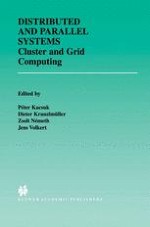Distributed and Parallel Systems: Cluster and Grid Computing is the proceedings of the fourth Austrian-Hungarian Workshop on Distributed and Parallel Systems organized jointly by Johannes Kepler University, Linz, Austria and the MTA SZTAKI Computer and Automation Research Institute.
The papers in this volume cover a broad range of research topics presented in four groups. The first one introduces cluster tools and techniques, especially the issues of load balancing and migration. Another six papers deal with grid and global computing including grid infrastructure, tools, applications and mobile computing. The next nine papers present general questions of distributed development and applications. The last four papers address a crucial issue in distributed computing: fault tolerance and dependable systems.
This volume will be useful to researchers and scholars interested in all areas related to parallel and distributed computing systems.
